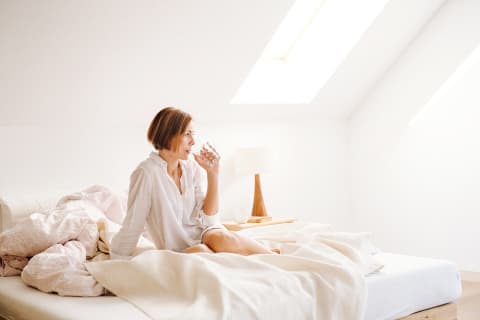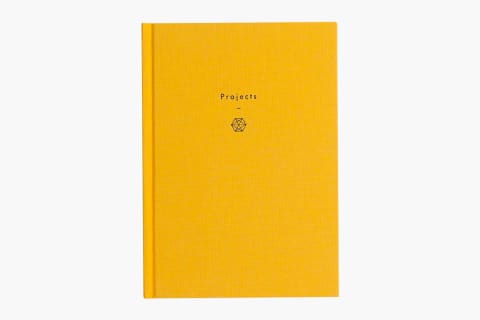Advertisement
How To Find What Bedtime Works Best For You

Stress, to-do lists, sleep procrastination, and just plain life—the good and the bad—can thwart even the best bedtime intentions. Sometimes it’s just not enough—nor possible—to will yourself to bed at the same time every single night, and that’s OK. Instead, many sleep experts suggest aiming for a “bedtime window”, or a range of time when your body is naturally ready for sleep, to take the pressure off sticking to an exact bedtime and still get the rest your body needs.
Read on to learn how to figure out your bedtime window, and what to do if you end up encountering that occasional sleeplessness (we’ve all been there!).
How your natural sleep-wake cycle works
Let’s start with some context: Your circadian rhythm, or internal biological clock that controls everything from your sleeping patterns to your hunger levels, cues the timing1 of your sleep-wake cycle based on natural daylight.
When we’re not disrupting or interfering with this master clock (like scrolling through our phones late at night or traveling across time zones), diminishing daylight triggers the release of melatonin to make us feel tired and bring on sleep. Over the course of the night as we sleep, our circadian rhythm signals the production of cortisol, which helps wake us up and reaches its peak in the morning.
Cortisol naturally declines throughout the day so that we can more easily fall asleep at night, keeping our sleep-wake cycle on track. The thing is, too much stress can knock these levels out of their natural rhythm. Sometimes, that makes it more difficult to fall asleep at night, and feel bright-eyed and refreshed in the morning. Cortisol Manager® Allergen Free, a supplement from Integrative Therapeutics, helps to support the body’s natural rise and fall of cortisol, resulting in feelings of relaxation, which supports a restful night’s sleep without diminishing daytime alertness.*
Our internal systems are logical, and when we work with them, we can function at our best.
Supporting your natural sleep-wake cycle
You can help support your circadian rhythm in a number of ways, like shutting down devices that transmit blue light and suppress melatonin; and opening the blinds as soon as you wake up to help kickstart the production of energizing cortisol. Maintaining a stable, consistent sleep schedule night after night—instead of fighting the first nudge of sleepiness to cram in more work or one more episode throughout the week—is a big one.

“A consistent sleep routine helps keep your natural rhythms steady over time,” says Deborah Sewitch, Ph.D., CPC, a sleep specialist who has authored over 50 articles on the topic in peer-reviewed scientific journals.
Of course, not everyone operates on the same sleep cycle, so it’s helpful to know when your body is most comfortable going to bed and waking up to feel well rested, refreshed, and energized. (Remember, it’s all about working with your circadian rhythm, not against it!)
How to find your most comfortable window for sleep
Instead of arbitrarily picking 10:30 p.m. as your bedtime, try to learn the “bedtime window” that naturally works best for you to fall asleep. And it’s actually pretty simple: On the weekends, your days off, and vacation—when you don’t have to get up and be anywhere in the morning—when do you usually fall asleep?
“Understanding how you sleep when you don’t have to work will tell you a lot about what your natural schedule looks like,” says Sewitch. A sleep diary can help you track the times you go to bed and how you feel when you first wake up the next morning, giving you a better idea of how it’s timed.
Keep in mind that most adults need between seven and eight hours of sleep each night. “You shouldn’t be going below below six hours, even if you’re a ‘short sleeper,’” says Sewitch. She points out that if you’re sleeping fewer than six hours a night during the week, your weekend sleeping pattern will likely involve some sleeping in to catch up on that sleep deficit—in other words, it’s not your true natural schedule.
Are you an owl or a lark?
As you track your sleep schedule over time, you may start to see patterns emerging that help you figure out your bedtime window. For instance, “some people are night owls, and others are morning larks,” says Sewitch. “A lark is someone who’s up at 5 or 6 a.m. ready for the day, and then ready for bed by around 9 p.m. Owls are opposite; they don’t want to go to bed before midnight, and they want to be able to sleep until about 9 a.m. in the morning.”
This is also important to know because if a new work schedule, travel obligations, or any change in routine isn’t in sync with your natural sleep timing, you may have trouble falling asleep or feel groggy in the morning. But for occasional sleeplessness, the stress-reducing ingredients and botanicals in Cortisol Manager can help manage stress to balance cortisol when taken before bed to support a restful night’s sleep without diminished daytime alertness.*
“Our internal systems are logical, and when we work with our system, we can function at our best,” says Sewitch. “So, if you want to function well in your waking day and get the most out of our waking day, sleep should be your first priority.”
Shop our bedtime picks:
*This statement has not been evaluated by the Food and Drug Administration. This product is not intended to diagnose, treat, cure, or prevent any disease.



